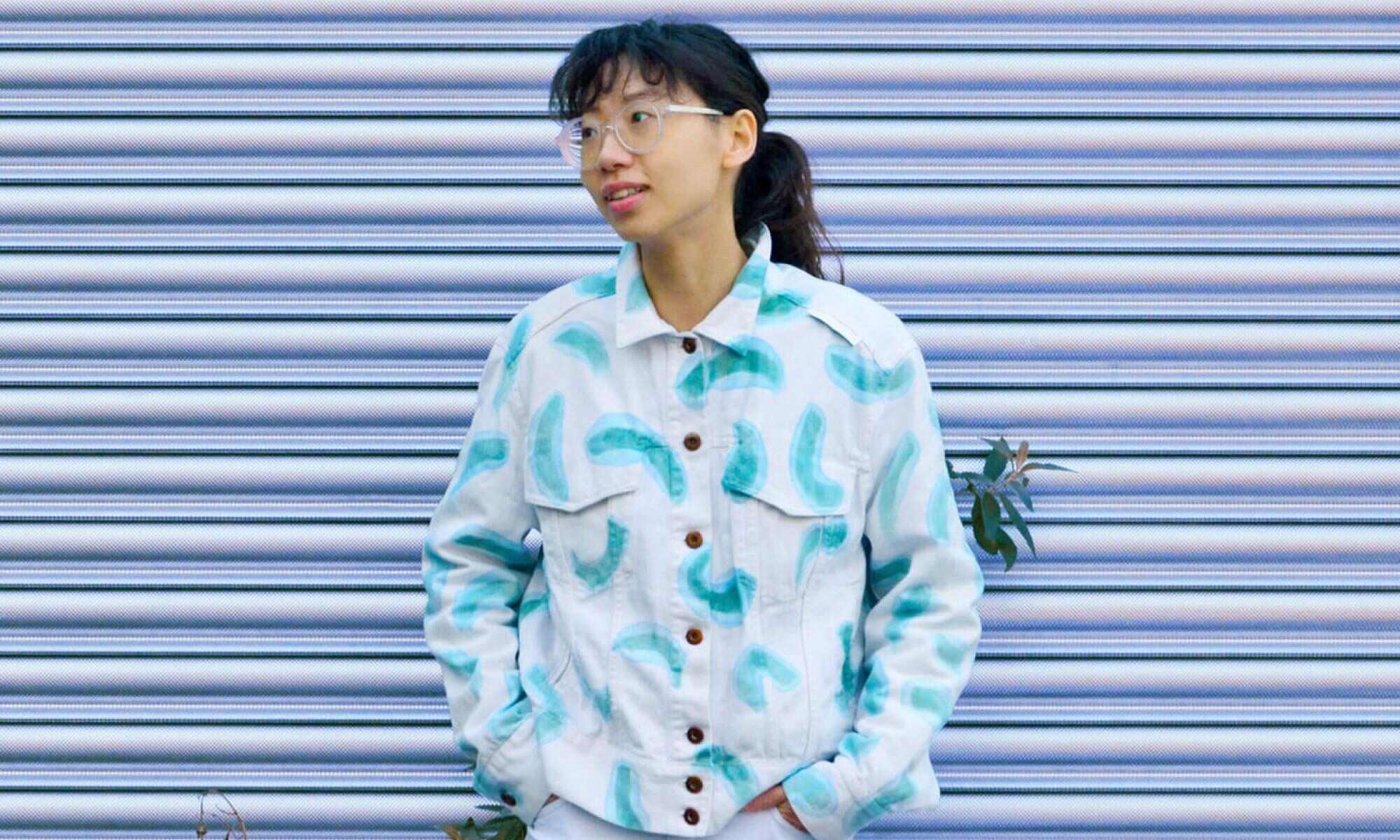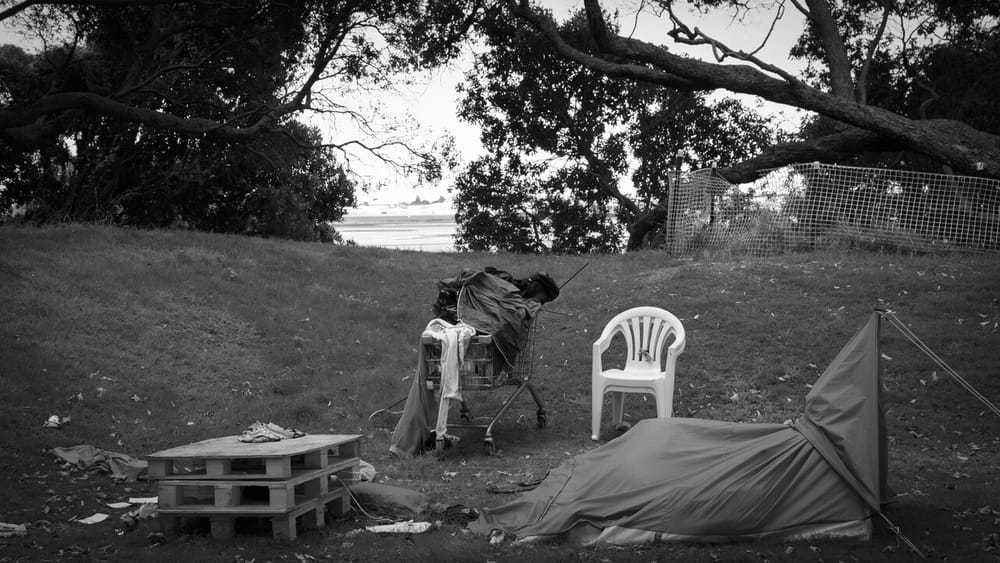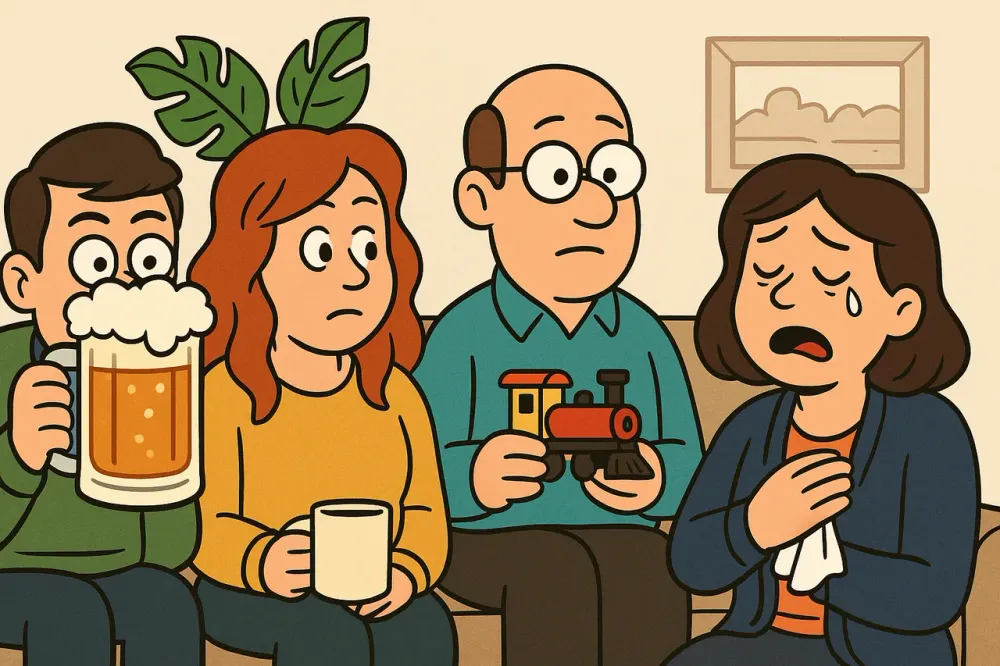Every year, the fashion industry generates over 92 million tonnes of textile waste, is responsible for over 190,000 tonnes of microplastics found in the ocean and produces nearly 20 percent of the world’s wastewater, making it one of the biggest polluters in the world, second only to oil. Is there a solution? Potentially, in biotechnology. In our interview series Fashion Futures, we explore the organisations and innovations presenting us with a more sustainable future: from textiles grown from fungus and dyed by microbes to algae clothing that can turn carbon dioxide into oxygen.
What is sustainability? How is sustainability perceived in the context of fashion? And, how do we define and approach sustainable practices?
These are the questions Dian-Jen Lin and Hannes Hulstaert ask—and answer—with their bio-tech startup Post Carbon Lab. This innovative trans-disciplinary research studio blends science and applied design to create clothes that photosynthesise. Post Carbon Lab is a service-based social enterprise that collaborates with local designers, businesses and communities, and coats their garments in a microbial pigmentation—algae cultures that live and grow on the textiles surface—which allows the clothing to absorb carbon dioxide from the air and emit oxygen, rendering its wearer climate positive. Beyond the tremendous potential this offers in the field of sustainable fashion, Lin and Hulstaert also hope this will change the perception we have of our clothes, encouraging a more nurturing and symbiotic relationship.
The Lovepost sits down with co-founder Dian-Jen Lin to discuss the importance of trans-disciplinary research, the issue of overconsumption in the fashion industry, and the ethos and journey of Post Carbon Lab.
Looking into what you do at Post Carbon Lab, I was really fascinated. I understand your business partner, Hannes Hulstaert, studied architecture and you studied an MA in Fashion Futures. So how did you two cross paths and where did the idea for Post Carbon Lab come from?
We met in a workshop set up—I don’t know if you’ve heard of the Vitra Museum, which is a quite famous European product design museum? They hosted workshops in the middle of France and he was working as a participant. So he was taking part in both of the design workshops, and I was working on the side, generally helping out with the facilitation of workshops etc. So that’s where we met and it was a bit of both serendipity and the common interest and mission that we wanted to portray in our designs and our ethos. Then the common empathy, shared empathy for nature and for species beyond humanity—that was a recurring theme in both of our design practices, professionally and academically. So we started Post Carbon Lab as a transdisciplinary design research studio and then at the time we were focusing on quite different design research projects that span different fields.
In 2017, I was working on a project for the Kering Award [alongside] Stella McCartney. We wanted to answer the question, "What is ecological fashion?" [and] investigate fashion as an omnipresent and very powerful and influential medium. That brings up the fact that now fashion has contributed to 10 percent of humanity’s carbon emissions, as well as water pollution coming from that. It has a footprint and, despite us not wanting to look at it, is present. However, we thought that maybe if we could reframe the impact, if that impact could be a positive one, it could also be a very impressive one. [Fashion] is something that everyone can relate to on a daily basis and so through the project we worked with the scientists and the Natural History Museum and my mentor is also a marine biologist, so it was again like crossing the boundaries of the design disciplines. There was science, textiles, textile chemistry and engineering, all these elements. And then we were very lucky that we won the Kering Award in 2017. That gave us traction and momentum knowing that something as crazy and speculative and weird as this—something like photosynthetic textiles—could be interesting to people.
In 2018, we hosted a workshop along with the Waag Society, which does a lot of bio-hack and bio-art initiatives around Europe. And we realised that there’s a lack in the UK in the sense that not a lot of people take part in these community bio-hack, garage biology movements. I don’t know if you’re aware of it, but it’s a movement that’s been brought about to lower the threshold of access for science, for biology, for biotech in general. I didn’t come from a scientific background, but I think with common knowledge and communicating academic knowledge through a not boring, heavy text journal, jargon [ridden] format, science can be preached and can be understood by even five year old kids. So it was a movement that was about spreading awareness and lowering the threshold of accessing scientific knowledge in general.
In 2018, we hosted a workshop in London because we realised that despite the whole network of hack space and FabLabs throughout Europe, there was nobody—despite London being such a forward-thinking avant garde city—hosting bacterial pigmentation and dyeing workshops. We thought this was bogus. I moved from Taiwan to London thinking that London would have access to these things but at the time there was a lack. So we took the responsibility on ourselves and hosted a workshop and it was a huge success. We got fully booked and we even had people on waiting lists hoping to get in. We realised that there is a craving for this type of knowledge, for this kind of understanding, but there was just no access. Then we thought, if there’s an interest from the designer community, from the maker community, and maybe even expanding that to textile based businesses, then what can we do with that? So in 2019 we soft launched our service pilot and then we start working with designers, students, communities, to see what can these microbial based colour assets, as well as our synthetic coating, [contribute in developing] a more sustainable product range for them.
Then in 2020, we registered. So we can say Post Carbon Lab is now an open innovation and collaborative based social enterprise that offers sustainable, microbial colouration R&D services to textile based businesses. It’s a bit of a mouthful, I know. [Laughs] But what we do essentially is people come to us—businesses that originally make fashion or textile accessories, footwear products, upholstery, whatever they make—they come to us and they’d be like, "Oh okay I used to have this staple product and it was dyed with petrochemicals. Is it possible that we can trial to see if we can create something like this without petrochemicals?" So we do that. We have also gained quite an attraction on photosynthetic coating pilots. Essentially, we create these microbial based coatings that allow textiles to transform into a carbon capture surface so that during the user phase—through a unique care routine similar to a houseplant—[the user] can sequester and mitigate their own carbon footprint. So it’s a lot of things that we do and I don’t know if that’s clear to you, or are you more confused now? [Laughs]
[Laughs] I find it really interesting because I’m not from a scientific background either. I think it’s interesting the fact that you came to London and no one was doing anything like that. You just assume, especially in big cities, that there will be someone. So why did you decide to go down the coating dye route? Because you hear a lot about people trying to make this fabric or this piece of textile, but pigmentation is a bit different. So why did you go down that route with this project rather than looking at creating a new fabric or just creating a new textile piece?
Yeah, I think that’s a really fair question and we’ve definitely got that a lot. So it really comes to our business model. We obviously have the easy choice where if we could to just manufacture or buy or source, even organic cotton t-shirts manufactured in India or China or whatever. And we could coat them and dye them and sell them like selling the next sustainable fashion collection. And we could make a lot of money from that. [Laughs] But I think if that’s the route we decide to go, we’re not contributing to solving the problem; we’re contributing to the problem. Because the problem we have is over consumption. Most of the major conglomerate fashion businesses, what they fail to address is the over consumption and over production of fashion items and textiles. In the UK alone there’s over 200,000 tons of textile waste a year. The fact that we are binning [that much] textile waste—we are putting a lot of garments, fast fashion items that we bought out of impulse, sending them to landfill—that’s going to cost a lot, environmentally. You know that polyester textiles are going to poison the ocean. It’s going to be the start of an ecological and potentially social disaster. And that’s the reason that we don’t want to become another product-based business, like a brand or like a fashion house. Because if we continue to prompt people to buy more things that they don’t necessarily need, then it’s not going to help solve the problem. What needs to change is people’s behaviour; how they perceive themselves; how they interact with fashion. This is why we have the photosynthetic coating that fosters a nurturing, a care-taking relationship between the users and the garments. So obviously [doing that] is something very difficult. Some people still think it’s quite far-fetched, maybe they think it’s too idealistic to have that kind of relationship, but it’s something that we’re piloting to see how far we can get.
The reason that we set up as a service-based [business is so] you can bring things in and we can coat it; you bring things in and we re-dye it. And what that means is that you can look into your dead stuff; you can look into your warehouse when you’re doing your Marie Kondo in your warehouse corners [and look at] all those forgotten styles that were never sold. You can give them to us and we can give them a new life. It doesn’t have to be brand new; it could be completely second hand, third hand or anything that you can find. Because I think what people fail to address in the sustainable fashion movement is that the most sustainable things are the things you already have. It’s not the things that you’re going to go out and buy. Organic T-shirt? No. It's the things you already have; the things that are already sitting in your closet and you’re not wearing. And funnily enough, statistics say that 50 percent of the clothes that are in our wardrobes are never worn.
I’ve heard that.
And then we go out and buy more. That’s never going to solve any problems. It’s going to contribute to more ecological and social problems. That’s why we are service-based.
I think a lot of big businesses say, “Oh this is sustainable; do this; buy this instead.” That isn’t necessarily the best approach. Whereas if someone offers us another approach instead, that’s always a bit more accessible and achievable rather than just saying, "Cut this out". So how do you translate what you do to people who don’t necessarily come from a scientific background or are just the everyday consumer?
We definitely experience some of these difficult moments in communication. I don’t think we have all the answers when it comes to how to best communicate our work. And I didn’t come from a scientific nor business background myself, so I use my best judgement. We discuss internally and not everybody’s from a scientific background, like [neither is] Hannes, my co-founder. I think it’s really about making the best use of common sense, because sometimes we think even [the term] photosynthetic seems a little bit too heavy. So then we use “climate positive” instead—something that’s positive for the climate. It's a little bit of word play that we are still experimenting with. We’re not the best at it yet. [Laughs] But we have a marketing person—Wayne—who will be like, “Maybe this sounds a bit weird or sounds too tacky.” I think, especially throughout the pandemic, we’ve had some feedback from people where we used to call our colouration [mimes quotation marks] ‘bacterial pigment dyeing’, and what we heard was that everybody thinks bacteria is something disgusting.
Ohh, I didn’t think of that.
I mean it depends from person to person, but I think from a layperson’s perspective [when it comes to] bacteria and even microbes, people sometimes still think microbes are not really good. When you talk about bacteria, people immediately think, "Oh it’s going to make me sick." And they immediately disengage. And especially throughout COVID, the reputation of bacteria and microorganisms dropped. They’re so different from viruses, but they’re just equally small and they do wonderful things that if we don’t understand we think it’s scary or we think it’s going to make us sick. But we’ve changed how we communicate these things a few times. Hopefully it’s been coming across less disgusting or at least less intimidating. [Laughs]
It sounds like you’ve obviously got an awareness and are working on how to put that in better terms. Tell me about some other obstacles you’ve had to overcome or challenges that you regularly face.
So 99 percent of the colourants that’s currently employed in the [fashion] industry include chemicals. And some of those are carcinogens, heavy metals, very nasty mutagens and it’s not great for humans to be around them in general, because our skin is very absorbent. The same works for clothes. If you wear clothes that have been immersed with heavy metals and carcinogens, wearing [them] is not going to give you the best impact on your skincare and health in general. So I think one of the biggest obstacles is the awareness that’s still not coming [through].
On the operation side, we are very aware of our research footprint. We’re not a conventional biotech company [and we don't have huge investment backing]. If throughout the operation we had to use a lot of petrochemicals, we had to burn, we had to acquire equipment or source from China and we didn’t put any effort into minimising that, it wouldn’t be justified. So we actually go around London and then scavenge and forage waste, safe construction waste or abandoned items, materials from P2P networks that we have in London. We collect these wastes and then build our office infrastructure, for instance [moves to one side of camera to show something] this is an incubator which is a fridge that we up-cycled.
Oh wow.
We collect them from streets in London, which means that we can customise it to grow microorganisms using just the right amount of wattage in the electricity input that it needs. Versus if we were to be an investment-backed biotech company, these kinds of things usually take 15k to buy one, and then that’s [imported] from China and made from all sorts of different alloys and metals and there’s no recycling infrastructure after that. So [shrugs] it’s a different route that everybody wants to take and we are small so we do things that we think fit with our ethics and that we like doing. [Laughs]
It does and you’re looking at every stage. You’re sustainable and practicing what you preach. It’s really interesting because I think a lot of people can have a final product that can be very sustainable, but behind the scenes it's not necessarily that way.
I think that’s why greenwashing has been a problem in fashion, because ultimately we want to consume things without feeling guilt and when people sell us guilt-free things, we buy them [laughs] without asking questions. It is a caveat with human psychology and I definitely acknowledge we will never reach 100 percent sustainability. We can try our best and I think every business needs to be very self-critical in a time like this. Conglomerates with so much money, so much resources and human power, why aren’t they asking those questions themselves? We’re very small and we’re trying to ask all those questions. I understand their challenges. I think what I can say is that if you’re bigger and you have more money and more power, what you’re also putting out into the world should be proportional rather than a tiny capsule collection. [Laughs]
Throughout the pandemic, we’ve learned that if we’re not doing something positive to the climate, to the environment, to the communities that are involved, we might as well cease operation because then the planet can heal and we can maybe survive collectively as humanity; as a species in the next decade.
It is like you said with the lockdowns, there were massive changes in the atmosphere and the environment. I’m a firm believer that it was not just coincidence because as soon as things started opening, you could see the difference. I know a few people have said how working with nature and working with the living organism rather than working against it is definitely going to make a difference.
We are part of nature. I think a lot of people see it as “us versus nature” which is like the 18th century portrait of humans above nature.
Yeah, that’s very true. I would love to talk a bit about the coatings you make. I think it was the algae coating that was able to photosynthesise and that just blew my mind. That’s something that is very forward-thinking to me.
Thank you so much. I'm really glad that you think it’s forward-thinking. We've actually had quite a few people think it’s outrageous. Some people think it’s mad, some people think it’s ingenious and we’ve got all kinds of mixed reviews. People [who understand it] come to us and be like, "This is really cool." Or people be like, "This is disgusting, why would you wear that?" And there are people even on the further spectrum thinking that because photosynthesis generates glucose which is a kind of sugar, that you’re going to end up wearing sugar. But if that’s the theory then if you go touch a tree it will feel sugary on your hands. [Laughs] So there’s an imbalance of scientific information there because I think everybody’s knowledge may not necessarily be at the same place. And sometimes it’s quite difficult to have these conversations and try to justify what we’re trying to do. It is a wild idea that I think will facilitate a completely different relationship between us, garments, clothing and the objects around us in general, because it can send a message back to you; it can give you feedback. If you’re not taking care of [the garment] properly, it might change colour; it might start fading; being photosynthetic. And it is a small way that we can communicate with our objects which at the moment, we’re not communicating with. We’ve been conditioned to have a “use and once it’s served its purpose, dispose” kind of relationship. Fast fashion.
In the past couple of years, people are starting to raise awareness and mending this relationship we have with our clothing and objects. People are doing embroidery and personalising and customising objects to make them more intimate. And what we’re trying to do is essentially one way of achieving that. It’s to retain that intimacy with the object we have rather than the kind of fast fashion consumerism philosophy where we can’t be happy with what we have and we need to have more and more despite that. [Laughs]
It is interesting how it all does come full circle because obviously way back when clothes were made to last, it was hand me downs, it was repairs. And then it kind of went all disjointed, like you say with fast fashion coming in, and now it’s slowly coming back around again with things like repairing and upcycling. Obviously everyone is going to have their own opinion but I think what might seem crazy now, in a few years time it will be less crazy.
That’s just how new things are. When Steve Jobs said he was going to make a portable computer, nobody believed him and now everybody has one. So it’s just how new things are.
I mean at the moment we’re still niche. We work with a few collaborators, a few pilot partners and people commissioned us to do some things. And even though for the moment we’re quite niche and quite small, the media is very interested in us. People write to us and say, "Wow I really love your work." It makes my heart really warm every time I read those messages from people I don’t know. And I think that makes me happy and it's the reason I’m still here. And, you know, I’m okay with it being small for the moment because I know these things are going to take time.
Are you looking to expand in the future, if it’s in line with your values?
We definitely are planning that. Hopefully, from the public, private sector and potentially investment to see where we can go. But then I think, you know, there’s always going to be a conflict where if we choose the investment route there’s going to be the conflict of profit. Because profit is why people invest in you, right; return of investment. [There is also] the more inconvenient way of sourcing; like how we how source from waste, resources from construction waste, etc. And for conventional investors, they consider that as an inconvenience if it’s inefficient or unstable. And this is a whole other systematic ideology that’s very hard for me to break single handedly. But for the moment, we’re tackling the question of how to scale sustainably. We are planning to scale up, but we’re still solving the problem of how to scale sustainably. And given the best way to scale, for instance franchising in different small areas where they can use their local microorganisms and we can transfer that technology. We do want to scale and then maybe that would be the way to go forward.
As part of our Biotech For Change theme, we are asking everyone in this series to share what the future of fashion looks like to them so we can have it illustrated. So can you paint that picture for us, in words?
I think the most important thing and the thing that I’d like to advocate is to own your own carbon. So what that means is having a rough understanding. It is kind of similar to how we manage our account balance: how much cash flow comes in and how much [goes out], how much you can spend each month. In my opinion, for the fashion industry to go forward; for every business and every individual it’s the same: own your carbon. Know your carbon footprint number. Know how much you are generating through your daily operations and then on top of that how much you can mitigate, how much you can minimize, how much you can reduce and then to the extent that you can’t, you can offset that elsewhere. Taking your carbon footprint into your own hands is the only way we can move beyond climate change. Then we can mitigate it. If it’s measured, it’s controlled. And that’s how I see things going forward and not just in the fashion industry, but in the car industry as well, the fast moving consumer goods industry. But honestly, if you don’t know what’s happening, then you don’t know how to solve the problem, it’s simply just that. [Laughs] If you were to paint something, then I think in our scenario, the clothes you’re wearing could eat what you were exhaling. I think the future could be beautiful if everybody had photosynthetic clothing. You'd offset your carbon emissions and form a symbiosis with your clothes, which would be fed by your carbon. [Laughs] Besides that, I think wearing something photosynthetic just means you have a beautiful piece of artwork that is a collaboration between nature and designers—human designers. And it’s just beautiful to look at, beautiful to wear; you feed it as it feeds you. It’s an active reminder of the fact that we are all part of nature and if we escape from nature, we can’t exist. It’s as simple as that.







